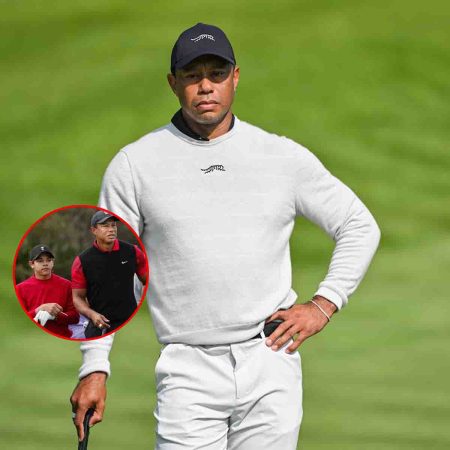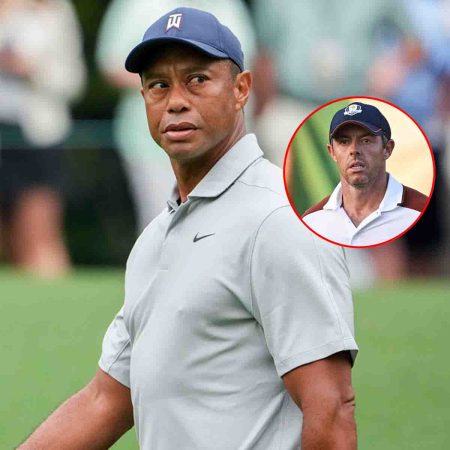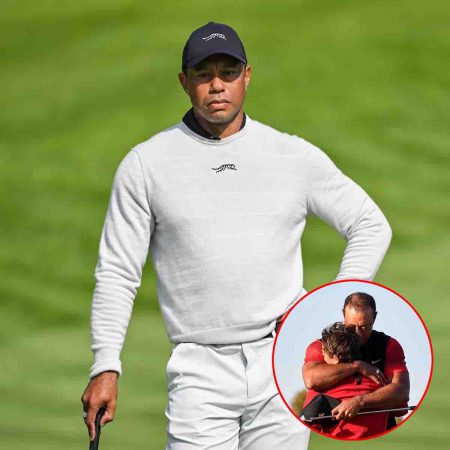/cdn.vox-cdn.com/uploads/chorus_asset/file/24365619/1241132195.jpg)
It’s been 2023 for a few weeks now, and if you tend to make New Year’s resolutions, yours is probably well underway by this point. The same is true for the Celtics, who undoubtedly wished to begin 2023 in a more positive manner than they did at the year’s finale. They currently own the best record in the NBA after going 5-2 since the start of the year.
There’s still room for improvement, of course, which is why we’re back with Part 2 of our series listing out New Year’s resolutions for each player on the Celtics’ roster. Today, we’ll start to dig into the team’s main rotation. If you missed Part 1 detailing the back end of the bench, you can check it out here.
Derrick White: Play with confidence offensively
After a hot start that saw him shoot better than 40% from three for the first couple months of the season, White — along with much of the roster — came back down to Earth in December. He was about as frigid as a player can be, shooting just 24% from behind the arc with a true shooting percentage threatening to dip below the 50% mark.
With more than 60 games under his belt as a Celtic, we all know by now who Derrick White is as an NBA player. He’s a tremendously versatile defender and a valuable connecting piece in most lineups, but a limited and streaky offensive player. White is neither as good of a scorer as he was to open the season, nor as bad of one as he was in December. He’s a career 34% three-point shooter, which puts him slightly below the league average.
The Boston offense is just better when he’s putting up shots. It’s difficult to survive against good teams with lineups featuring a non-factor on one end of the court, whichever end that may be. Well-roundedness is just too important in today’s NBA — ask the Philadelphia 76ers, with their struggles to incorporate limited offensive players like Ben Simmons, Matisse Thybulle and PJ Tucker. White is a more useful offensive player than any of those three (depending on how you feel about Simmons); he just needs to develop some assertiveness and consistency.
One place to start: getting downhill and attacking the basket. White is attempting twos at far and away the lowest rate of his career, including just 2.8 shots in floater range or closer per game. Between San Antonio and Boston last season, that number sat at 5.1. You can never have too much rim pressure, and giving White some more opportunities to get downhill could help him play more assertively on the offensive end of the floor.
Grant Williams: Game-to-game consistency
:no_upscale()/cdn.vox-cdn.com/uploads/chorus_asset/file/24341522/1245876386.jpg)
On the whole, Williams has had an effective “prove-it” season as he approaches the end of his current contract and restricted free agency this summer. He’s shooting better than 40% from three for the second consecutive season, and he continues to be a crucial part of the Celtics’ defensive scheme with his malleable skillset.
Game-to-game, though, it’s been a bit difficult to tell which kind of Williams you’re going to get. Raw points scored is a stat of limited usefulness, especially for a role player with low offensive usage, but listing out Williams’ point totals over his last ten games paints a picture: 9, 3, 12, 9, 20, 2, 12, 0, 9, 3. He’s been a boom-or-bust offensive player for much of the season.
The Celtics would like to see more “boom” coming from their bench. As a group, the reserves have had an up-and-down season, with their impact frequently lapsing as the team has cooled off from their blazing start to the year. After the blowout win over the Mavericks, Williams discussed how interim coach Joe Mazzulla challenged the bench to step up and have Tatum’s and Brown’s backs.
“He’s called out those two guys enough,” Williams said after the win. “I feel like he’s keeping everybody accountable … You have to respond, and when you’re challenged, it’s a matter of stepping up. Whether you step up or not, that’s dependent on how much character and how much hard you have.”
Thus far in January, Williams has continued to be an on-again-off-again player. Nobody’s expecting him to become a nightly 20-point scorer, but bringing a consistent 10-12 would go a long way towards making the Celtics less volatile.
Malcolm Brogdon: Support the Jays off the bench
:no_upscale()/cdn.vox-cdn.com/uploads/chorus_asset/file/24360449/usa_today_19771068.jpg)
The other side of the Celtics’ bench struggles has been Brogdon. Brought in to be the anchor of the second unit and help carry the offense alongside Tatum and Brown, Brogdon’s season has trended a bit more towards “pretty good” than the “great” we’d like to see. The counting stats look excellent: he remains one of the NBA’s best three-point shooters (fifth in the NBA in three-point percentage), and he’s recording the best all-around shooting line of his career (48-45-89) since joining the 50-40-90 club in his final season with the Bucks.
But it feels like there’s still fruit on the tree. His workload has been surprisingly low, as he’s averaging just 23.7 minutes per game, which has led to his lowest volume of shot attempts (9.7 per game) since his rookie season. He closed out December with four consecutive single-digit performances, and all of them saw him record eight or fewer shot attempts — including a 16-minute, four-shot performance against Minnesota in which he was nearly invisible.
Part of this may well be deliberate; this team has its eyes on the postseason, and entering the playoffs with the injury-prone Brogdon fully healthy is more important than mid-regular season basketball. The Celtics beat the Timberwolves handily; they didn’t necessarily need more from Brogdon that night.

But there’s still room for a better balance to be struck. Brogdon is the one player on this roster besides Tatum and Brown with a proven track record of high-volume offensive production (Blake Griffin notwithstanding). In Indiana, Brogdon showed he was capable of shouldering a larger offensive workload than he did early in his career. His usage rate ticked up from the high-teens in Milwaukee to the mid-20s in Indiana, while playing the most minutes of his career. He doesn’t need to carry quite that much of a load (his usage rate this season currently sits at 23%), but he could certainly help ease the burden on the team’s stars if he gets on a roll.
The upcoming stretch without Jaylen Brown, who will miss up to two weeks with an adductor strain, creates an opportunity. With extra touches up for grabs, Brogdon will have a chance to step into a larger role and build a rhythm as a shot creator.
Robert Williams III: Appear in every playoff game
The Celtics made the NBA Finals despite Williams missing nearly two full series. After returning in Game 6 of the second round against the Bucks, he played in every game save one — the Game 3 loss to Miami, due to knee soreness. Upon his return, he didn’t look close to 100%, but still managed to put effective minutes on the court. He was a legitimate difference-maker in the Eastern Conference Finals against Miami, and although the Warriors were able to exploit him (along with the rest of the Boston defense) a bit more, he still blocked a boatload of shots and competed hard in the NBA Finals.
For the past two seasons, the Celtics have looked like the best version of themselves with Williams on the court. They’re significantly more effective defensively and on the boards (especially the offensive glass) when he plays. He elevates the offense with his finishing ability and passing, while transforming the defense with his ability to play free safety on the other end. What he can do on the court isn’t in question at this point — it’s his ability to stay on it.
So let’s keep it simple: Robert Williams needs to play in the postseason. It’s up to him and the Celtics’ staff to ensure that he stays fresh enough to record the first healthy playoffs of his NBA career.
Next up, in the third and final set of our Celtics New Year’s resolutions, we’ll discuss the final four players on the roster. Stay tuned!
Source: https://www.celticsblog.com








